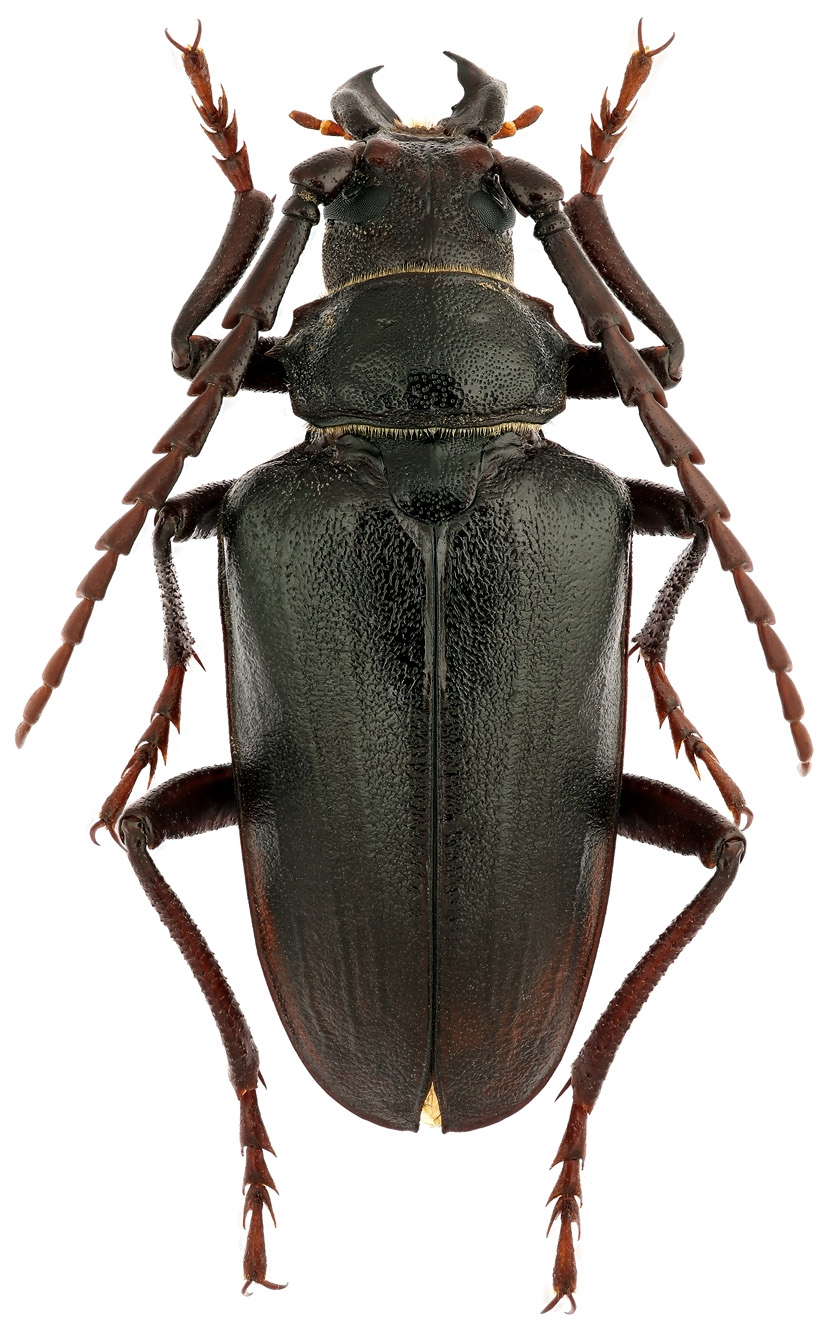Psilotarsus turkestanicus, a species occuring in former Soviet Central Asia (Tajikistan, Tukrmenistan, Uzbekistan), has been described from Samarkand environs (Uzbekistan)
as Prionus (Psilopus ?) turkestanicus by Andrej Petrovitsch Semenov Tian-Shanskij in 1888 [▽]. Larvae of Psilotarsus turkestanicus develop in the soil and feed on the
roots of various shrubs. Unlike most Prionines, this species is active mainly during the day (11: 00-16: 00), when females attract males by emitting a sex pheromone [★].
| Body length: | ♂♂ 24.2 - 37.0 mm / ♀♀ 25.0 - 51.0 mm |
| Life cycle: | 2 - 3 years |
| Adults in: | May - July |
| Host plant: | polyphagous on roots of desert shrubs |
| Distribution: | Tajikistan, Tukrmenistan, Uzbekistan |
The depicted mounted male beetle was collected in Tajikistan.
[▽]
Semenov Tian-Shanskij A.P.:
Vorläufige Diagnosen zwei neuer Prionus-Arten.
Wiener Entomologische Zeitung 7 (4): 157-158, 1888.
[download  ]
]
[❖]
Danilevsky M.L.:
Review of genus Psilotarsus Motschulsky, 1860, stat. Rest. (Coleoptera, Cerambycidae, Prioninae).
Les Cahiers Magellanes 3: 1-34, 2000.
[download  ]
]
[★]
Danilevsky M.L.:
Longicorn beetles (Coleoptera, Cerambycoidea) of Russia and adjacent countries. Part 1.
Higher School Consulting, Moscow 1: 522pp [pages 51-52], 2014.
[download  ]
]


